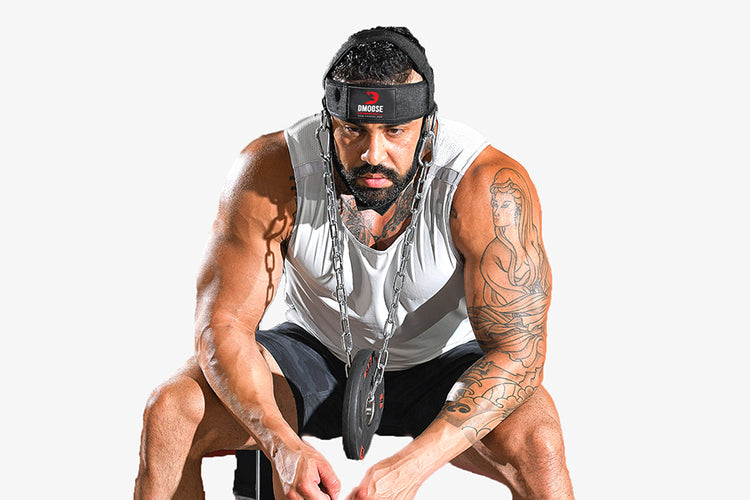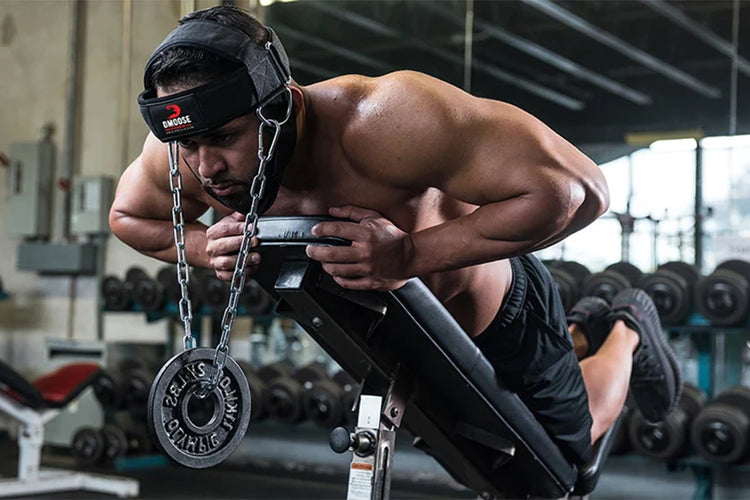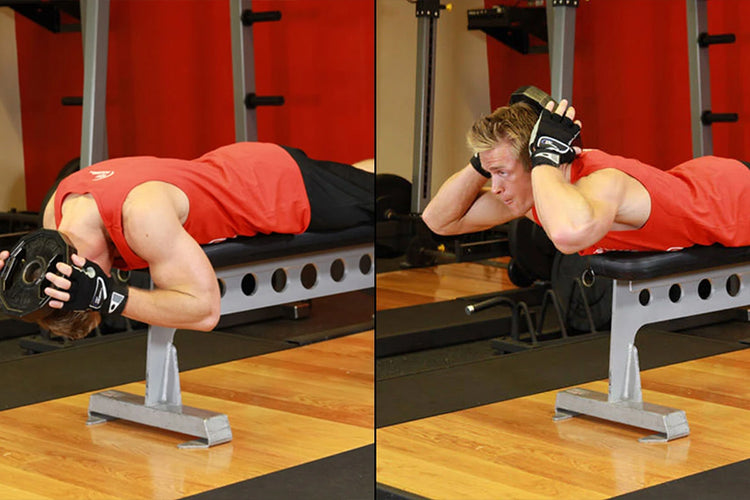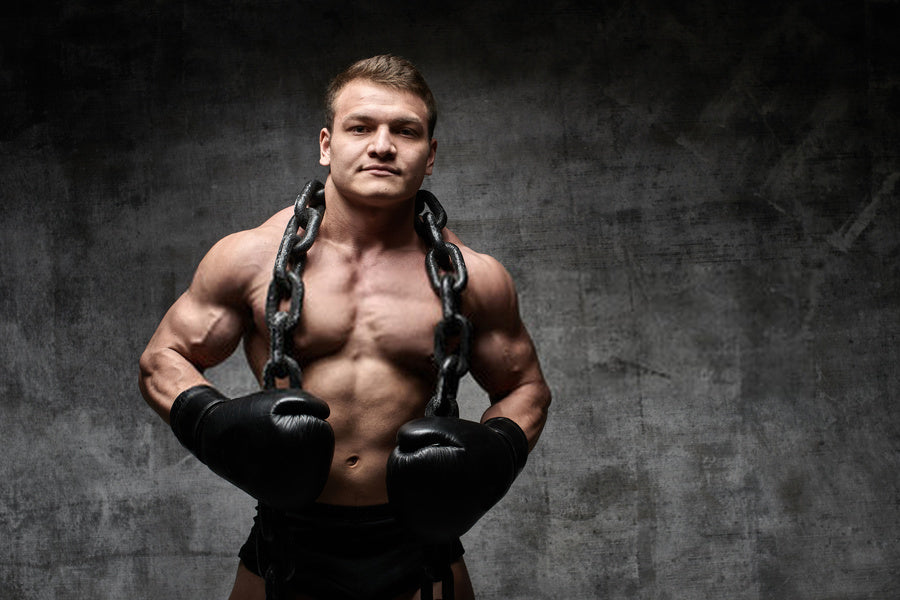Have years of exercise and strength training got you looking somewhat disproportionate? Do you feel your head is smaller compared to the rest of your body? If you agree to either of the above statements, let me resolve this mystery!
Your body has started to look asymmetric because you've ignored the neck muscles for too long. Building neck muscles is just as crucial as exercising any other muscle in the body, and this goes for everyone, especially athletes and boxers.
Read the article ahead as we share with you what you've been missing out on because of your poor neck and how you can quickly build more muscle mass in this area.
Thick neck muscles are common amongst celebrities, athletes, and boxers, but they have a more significant role in our lives than just being aesthetically pleasing.
Our necks support the head and the brain while providing a passage for an entire system of nerves. For smooth communication between the brain and the rest of the body, an impeccable system of nerves is required, which can be hindered if the neck area is weak or suffers a concussion when fighting.
Plus, our necks have spinal cords passing through them, and if the neck muscles are compromised, our spine will suffer and result in poor lumbar strength.
When it comes to boxers and other athletes, having a strong neck is very crucial. Exercising the neck muscles helps reduce the chances of neck injuries, allows greater flexibility, and enables the neck to recover quickly from any concussions suffered during fights.
"As a former athlete, I know the importance of neck strengthening exercises to prevent injuries. In fact, I consider neck strengthening exercises to be one of the most important components of any workout routine."
Arnold Schwarzenegger (Former Professional Bodybuilder, Actor, and Governor of California)
If you wish to be a boxing champion, having thick, muscular neck muscles is the key to success. A thick neck will allow you to take a punch and recover quickly without getting injured, making you undefeatable amongst the competitors. Let's move further to find out more about neck training.
Related Article: Top 10 Fitness Advice for 2022 From World Class Athletes
Why Should Neck Training Be a Priority for Athletes?
Why Neck Training Should Be a Priority for Athletes #necktraining
- PHS Chiropractic by Pivotal Health Solutions (@phschiropractic) August 10, 2018
Article here: https://t.co/iunPLGXqc5 pic.twitter.com/QDwo7UzuC4
The neck is often overlooked in most training programs, but it plays a crucial role in athletic performance and overall health. Strengthening the neck muscles can improve posture, prevent injury, and increase overall strength and athletic ability. Besides the fact that thick muscles make you look attractive, there are multiple other reasons why you should be working your neck muscles, let's have a look:
No More Neck Pain
Chronic neck pain is among the most common problems faced by most people. Poor standing posture, awkward sleeping angles, incorrect desk and chair heights, and long hours of desk jobs all contribute to neck pain.
Practicing neck exercises and strengthening the neck muscles helps relieve neck stiffness, release tension, and prevent pain or injuries.
Protection Against Injuries
Whenever our body faces a shock, the neck is always the one to face its brunt. A strong neck is crucial for boxers, MMA fighters, wrestlers, etc., who frequently suffer direct blows to the head.
A strong neck enables them to recover from an impact directly to their head relatively quickly. When you've been hit on the head by the opponent, a strong neck will prevent the head's spinning and absorb the blow quickly, allowing you to fight back harder.
Improved Sports Performance
For every sports activity, having strong movement and balance is critical. Since many neck muscles assist the respiratory system in our body, having good neck strength is a game-changer for athletes.
A strong, thick neck helps improve the nerve impulse, which runs from our brains to the spinal cord, helping athletes breathe better and strengthening movement and balancing actions.
Best Neck Exercises for Boxers
As a boxer, keeping your neck strong and flexible is important. Neck muscles play a crucial role in maintaining good balance, stabilizing the head, and absorbing the impact of punches. You should incorporate the best neck exercises in your training routine to enhance your performance in the ring.
These may include neck flexion, lateral flexion, neck extension, and neck plate curls. With these exercises, you can reduce the risk of injuries while increasing your agility and strength, making you a better boxer. Here is what you need to do to grow thick, strong necks
1. Neck Flexion

Performing neck flexion exercises helps relieve stress and loosen stiff muscles while reducing spinal pressure. When doing the movements correctly, a stretch should be felt at the back of your neck.
How to Do It:
- Start by attaching the neck harness securely around your head, ensuring a snug fit without causing discomfort or restricting your breathing.
- Stand or sit in an upright position with your spine aligned and your feet shoulder-width apart.
- Begin the movement by slowly lowering the back of your head while maintaining control and keeping your neck and back aligned.
- Pause for a moment in the fully flexed position, feeling a stretch in the muscles at the back of your neck.
- Slowly return to the starting position by gradually lifting your head back up to an upright position, resisting against the applied resistance.
- Repeat the movement for the desired number of repetitions, ensuring smooth and controlled motion throughout.
2. Neck Lateral Flexion

Incorporating neck lateral flexion exercises into your routine is key to maintaining a healthy neck and spine. This movement targets the muscles on the neck's side and helps increase flexibility and range of motion.
Not only is this beneficial for everyday activities like turning your head to check your blind spot while driving, but it can also improve athletic performance in sports that rely heavily on neck movements, such as wrestling or boxing.
How to Do It:
- Start by sitting or standing in an upright position with your spine aligned and your shoulders relaxed.
- Keep your head in a neutral position, facing forward.
- Begin the movement by tilting your head to the right side, bringing your right ear closer to your right shoulder.
- Maintain controlled movement, avoiding any excessive strain or tension.
- Feel the stretch on the left side of your neck as you tilt your head to the right. You should experience a gentle pulling sensation, but not any pain.
- Hold the stretch for 15-30 seconds, allowing your neck muscles to lengthen and relax.
- Slowly return your head to the starting position, keeping the movement controlled and deliberate.
- Repeat the stretch on the left side
3. Neck Extension

Neck extension exercises help relieve the stress on the neck muscles while increasing mobility, range of motion, and alignment, allowing you to go about your daily activities more efficiently.
How to Do It:
- Start by attaching the neck harness securely around your head, ensuring a snug fit without causing discomfort or restricting your breathing.
- Stand or sit in an upright position with your spine aligned and your feet shoulder-width apart.
- Hold onto any fixed object or use your hands to apply gentle resistance against the back of your head, opposite the direction you want to move your head.
- Begin the movement by slowly tilting your head backward, away from the resistance, while maintaining control and keeping your neck and back aligned.
- Pause for a moment in the fully extended position, feeling a stretch in the muscles at the front of your neck.
- Slowly return to the starting position by gradually bringing your head back to an upright position, resisting against the applied resistance.
- Repeat the movement for the desired number of repetitions, ensuring smooth and controlled motion throughout.
4. Neck Plate Curls

Have you ever heard of neck plate curls? They may sound like an obscure exercise but they are a great way to strengthen your neck muscles. When working out, many people neglect their necks so that they may experience stiffness, pain, or even injury.
Neck plate curls target the muscles in the back of the neck, which can help prevent these issues.
How to Do It:
- Start by lying down on a bench, facing the floor, and head hanging off the bench.
- Hold up a bumper plate and place it on the top of your head, holding it with both hands.
- Now, slowly lift the head, hold the position for a few seconds before you lower it down, and repeat the process.
How to Use a Neck Harness?
Neck muscles are home to various nerves and are connected to the spine, making them a delicate body. Therefore, the neck requires careful handling when using a harness with heavyweights.
Here are a few tips to keep in mind when using a neck harness:
- Ensure the neck harness is correctly wrapped around the head and does not come ripping off when weights are hung.
- Always use weights your neck can easily bear, or you will strain the neck muscles and get injured.
- Once you've hung the weights onto the harness, ensure you don't leave the weights hanging in the air. Hold the weights in your hands and set your position for exercising. When ready to exercise, slowly release the weights in the air without causing a jerk to your neck.
- Keep the weights supported when exercising your neck lying down by placing them on the floor and slowly lifting them.
- When flexing your neck with weights attached to a neck harness, never lift your neck so high that your neck muscles start hurting. You will have severe injuries if the neck feels anything more than a slight stretch.
- Ensure you are always in control of your neck and can handle the pressure and neck movements throughout the workout to avoid any consequences.
Related Article: How to Use Neck Head Harness
Things to Consider While Buying Neck Harness
When buying a neck harness for exercising the neck muscles effectively and efficiently, keep these essential elements in your mind.
- A neck harness must have nylon straps and thick paddings, ensuring utmost comfort.
- The head strap should be adjustable so it can fit anyone, and you don't have to go around measuring your head circumference and still end up buying the wrong size.
- The ideal steel chain length for hanging the weights should be 30 inches long and made with heavy-duty stainless steel so it does not break when lifting weights or get rusted with time.
- Superior saddle stitching and heavy D-rings in a neck harness guarantee you work out without fearing the weights falling off. You can intensify the exercises and enjoy a perfect resistance training session.
You can try the amazing neck harness by DMoose if you want to invest in reliable equipment. It comprises 30 inches of heavy-duty steel chain and extra-heavy D rings, ensuring the chain does not break when lifting weights. Besides, the deluxe quality nylon straps, thick padding, and adjustable straps provide comfort and extra safety.
Conclusion
Incorporating neck-strengthening exercises into your training regimen can greatly benefit boxers and athletes. Developing a strong neck can reduce your injury risk and improve your overall performance.
These four exercises, including neck flexion, neck extension, lateral neck flexion, and neck plate curls, are essential for building neck strength and should be practiced consistently. Remember to start with light weights and gradually increase the amount as you progress. With dedication and consistency, these exercises can help you achieve a robust and resilient neck that can take on any challenge in the ring or on the field.
Reading List
Article Sources
- Bovim, G., et al. "Neck Pain in the General Population". Spine, vol. 19, no. 12, June 1994, pp. 1307-09. Europe PMC, https://doi.org/10.1097/00007632-199406000-00001.
- Falla, Deborah, et al. "Effect of Neck Exercise on Sitting Posture in Patients With Chronic Neck Pain". Physical Therapy, vol. 87, no. 4, Apr. 2007, pp. 408-17. Silverchair, https://doi.org/10.2522/ptj.20060009.
- Boden, Barry P., and Christopher G. Jarvis. "Spinal Injuries in Sports". Physical Medicine and Rehabilitation Clinics of North America, vol. 20, no. 1, Feb. 2009, pp. 55-68. ScienceDirect, https://doi.org/10.1016/j.pmr.2008.10.014.
- Proctor, Mark R., and Robert C. Cantu. "HEAD AND NECK INJURIES IN YOUNG ATHLETES". Clinics in Sports Medicine, vol. 19, no. 4, Oct. 2000, pp. 693-715. ScienceDirect, https://doi.org/10.1016/S0278-5919(05)70233-7.
- Portero, Pierre, et al. "Effects of Resistance Training in Humans on Neck Muscle Performance, and Electromyogram Power Spectrum Changes". European Journal of Applied Physiology, vol. 84, no. 6, June 2001, pp. 540-46. Springer Link, https://doi.org/10.1007/s004210100399.








